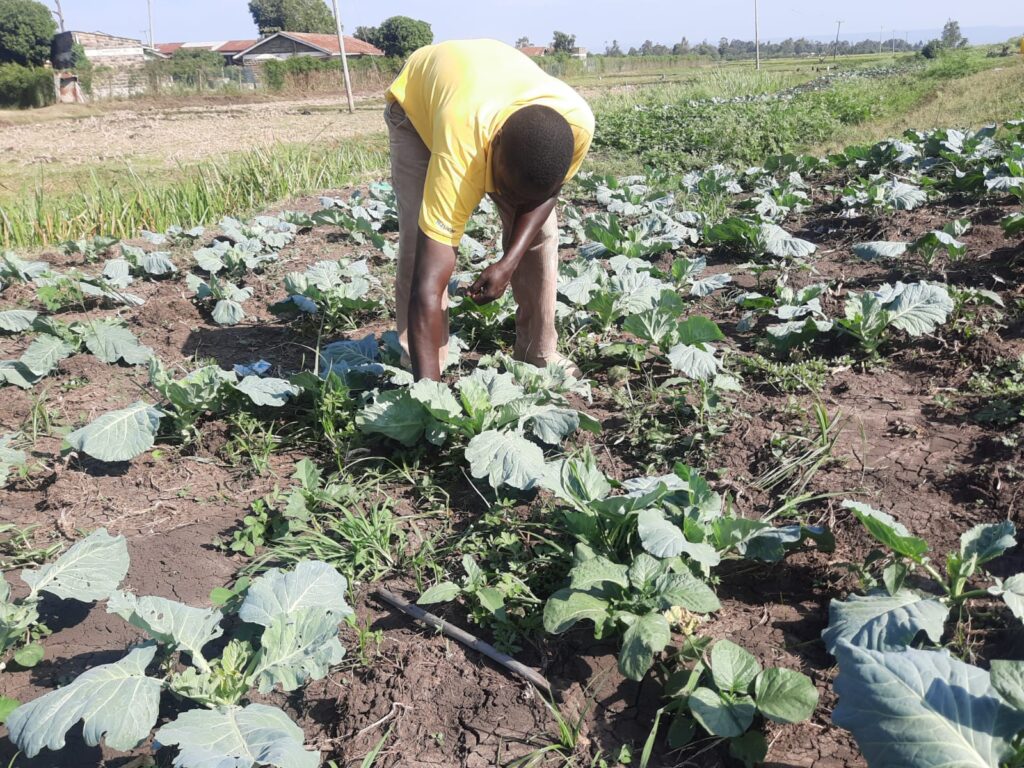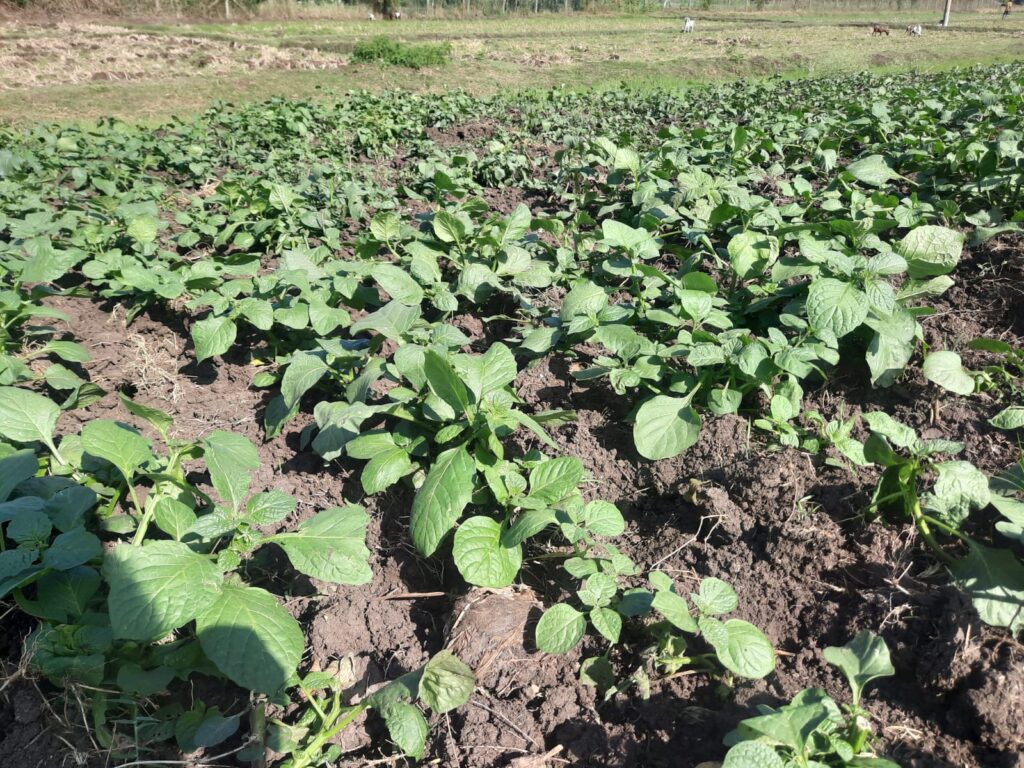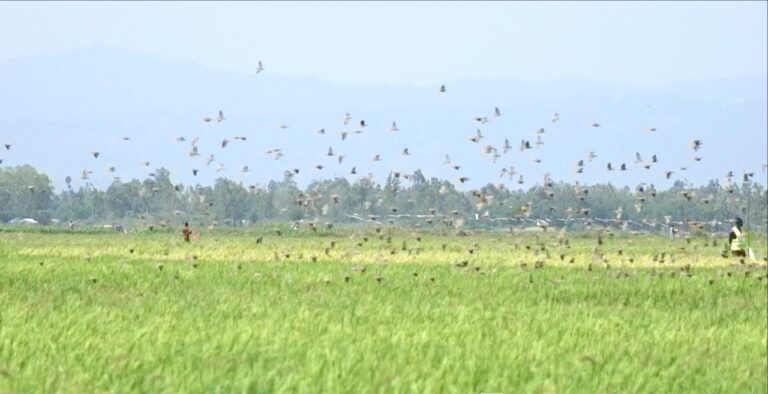After many years of dependency on rice farming as their economic mainstay, Ahero residents have now turned to vegetable farming.
The residents have for many decades been known for mainly producing rice both for export and domestic use.
But after losing most of their harvest to birds that have been raiding their farms in millions, it has dawned on some of them that there is need to try other forms of agriculture to sustain their livelihoods.
With that realisation, the locals are quickly turning to vegetable farming.
When the rice we depended on was wiped out by the birds, we suffered a lot and that is the reason we decided to venture into sukuma wiki farming
Charles Ouma
Sukuma Wiki Farming
Charles Ouma, 34 has been doing rice farming on a two-acre piece of land he inherited from his farther in 2009.
The father of three who is a boda boda rider says he cultivated and got good harvests up to 2021 when he lost more than half of the produce to quelea birds.
“When the rice we depended on was wiped out by the birds, we suffered a lot and that is the reason we decided to venture into sukuma wiki farming,” said Ouma.
Ouma says sukuma wiki farming is cheaper and more profitable compared to rice.

Previously, Ouma used Sh4, 200 to plough the rice farm and further use the same amount for rotavating the farm.
After getting a good harvest last year, I sold some of the Sukuma Wiki and purchased a rice farm closer to shores
Charles Ouma
But now he has Sh4, 600 to save as he only uses Sh3, 800 to plough and get the sukuma wiki farm ready for planting.
The saving does not stop here as he only uses Sh.700 to purchase the sukuma wiki seedling.
“For rice I used to buy 20kg seedling at Sh2, 000,” narrates Ouma.
Good Harvest
As opposed to rice which takes three months to mature after planting, sukumawiki only takes four weeks.
Ouma says he harvests 12 bags a week and sells each at Sh1, 200.
This goes on for months before he stops the harvesting.
Apart from sukumawiki ,he also cultivates the black eyed peas (kunde).
He further says that although they still cultivate rice in other areas, they now dedicate most of their time to vegetable farming, at least for now.

“After getting a good harvest last year, I sold some of the sukumawiki and purchased a rice farm closer to shores,” he says.
“For now, I get sukumawiki but also have rice for food because I now do it in small scale,” furthered Ouma.
If I get good harvests, I can stay for even a year without buying food
George Onyango
Rice for food
Closer to Ouma’s is Isaac Osimba’s farm.
Inside his three-acre land is lush green sukumawiki.
He told us why he also opted for vegetable farming instead of rice.
“We have decided to change. During harvesting, these birds come and raid the farms giving us a lot of problems. That is why we decided that change is a must,” he said.
I still cultivate rice but I decided to put more effort in maize and vegetable farming. This is the only way to ensure that I get food to sustain my family
George Onyango
Osimba also says cultivating rice is tiresome and takes a lot of time.
“Rice requires a lot of water compared to vegetables and sometimes the water levels here get down posing a great challenge to the farmers,” he said.
About a kilometre away, we met George Onyango and his family tilling a farm near a water can at the West Kano Irrigation Scheme.
On his two-acre farm, Onyango grows maize, beans and sukumawiki.
“I still cultivate rice but I decided to put more effort in maize and vegetable farming. This is the only way to ensure that I get food to sustain my family,” he says.
“If I get good harvests, I can stay for even a year without buying food,” he said.
Quelea Birds
The invasion by quelea birds into Ahero and West Kano Irrigation schemes rice farms has been giving the farmers sleepless nights.
The birds are long-distance migrants, with a capability of covering a range of over 10 million square kilometres and a colony of 1 million to 5 million birds can consume 50 tons of grain a day.

The bird eats up to 10 grams of rice a day and could wipe out an entire acre of rice in two days.
Our operation will cover the National Irrigation Authority area in Muhoroni, Awach kano, Ogange, Amboo, Okana, Ogongo, Kudho, Haro and Alara
CEC Ken Onyango
Recently the government launched an aerial spraying programme in Ahero and West Kano irrigation schemes in a bid to control quelea birds invasion.
Experts from the County Department of Agriculture have confirmed that some 300 acres of rice fields have been destroyed by the birds with 2000 acres still under threat.
Kisumu County Executive Member for Agriculture Ken Onyango in a press statement said the Crop Protection and Safety from Nairobi had been dispatched to eradicate 5.8 million birds in nine different locations.
“Our operation will cover the National Irrigation Authority area in Muhoroni, Awach kano, Ogange, Amboo, Okana, Ogongo, Kudho, Haro and Alara,” said Onyango.
